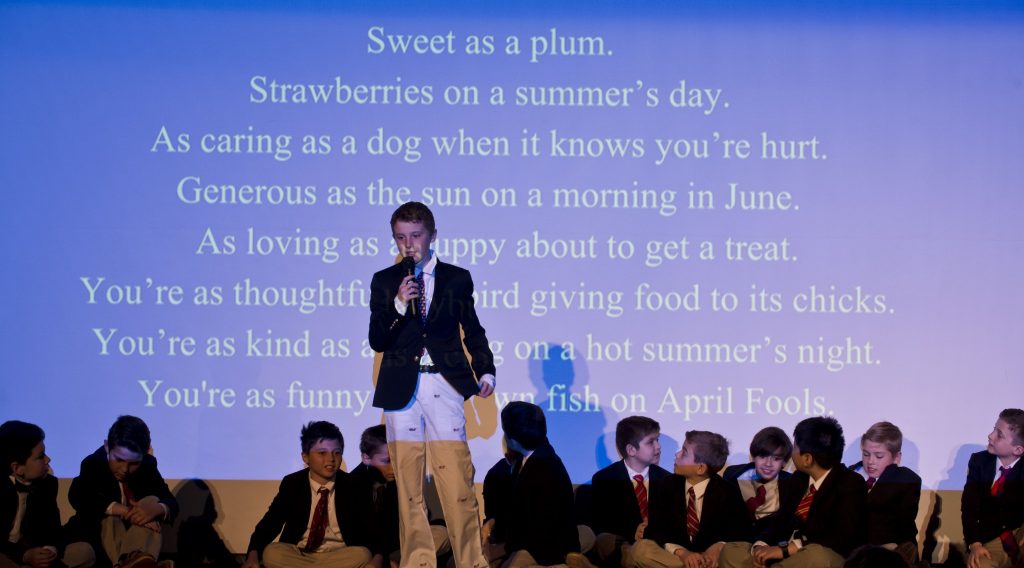 Think about the number of times you have been required to interact with colleagues, peers, or strangers in the last week. Have you attended a work meeting? Participated in an important discussion that required a shared consensus? Or simply had to send an email to a group of people?
Think about the number of times you have been required to interact with colleagues, peers, or strangers in the last week. Have you attended a work meeting? Participated in an important discussion that required a shared consensus? Or simply had to send an email to a group of people?
Communication and public speaking are critical skills, and research indicates that they must be honed at an early age. According to Psychology Today, a fear of public speaking affects “approximately 25 percent of Americans,” so it’s best to become practiced in publicly delivering information as soon as possible. At Fessenden, we promote public speaking as early as Pre-K and Kindergarten, and opportunities to practice and learn the art of communication extend through the ninth grade.
Communication In the Real World
The art of communication is multifaceted. A quality educational experience will acknowledge this and foster this important skill in a variety of ways. According to a recent article in Education Week, top employers list good oral communication skills as important qualities, but truly qualified applicants are hard to come by. The article notes, “relatively few regular public K-12 schools explicitly teach those skills, and even fewer teach them with real-world workplace scenarios.” So, if you’re considering a private school for your child, ask about the ways in which they teach and practice communication with students.
Here are four types of communication skills (and how they’re applied at Fessenden):
- Written: The development of written skills is woven throughout our curriculum, as it is in many schools. Students practice letter formation in Pre-K and Kindergarten and embrace various types of writing as they join our Upper School ranks; whether it’s creative writing or research writing, opportunities abound. And, our annual literary publication celebrates the diverse creativity of our students.
- Oral: Throughout a child’s time in Pre-K and Kindergarten, there are a number of chances for our youngest students to stand before their peers and practice confidence, eye contact, volume, and a general comfort with speaking in front of others. Opportunities at circle time and within classroom environments become gateways to bigger events, such as concerts and play performances. This skill-building leads to additional experiences as students get older. During this time, plays and musicals are more advanced, boys are required to deliver a meditation in front of their peers before the end of their ninth grade year, and they can often be found presenting to faculty and their fellow students as part of in-class studies and project-based learning units.
- Interpersonal: Individual and group interactions are important aspects of the learning experience. Our character education program is what sets us apart from many other schools, and it is thoughtfully incorporated into our curriculum. Character is as vital to our culture and curriculum as are science labs and soccer practice—and has been since our founding. It’s woven into music lessons, meal times, and basketball drills. It’s evident in our interactions with one another and in the choices we make when no one is looking.
- Nonverbal: We constantly teach students that they can say a lot without saying anything at all. Just as there are ways to be respectful, compassionate, and attentive without communicating verbally, there are ways to be disrespectful and disengaged without talking. This comes into play when we discuss mindfulness and when we represent the school in public—like our annual community service days or field trips—and each day in the classrooms, the hallways, and the dining hall.
You Tell Us.
What are some of the ways you see communication coming into play at an early age?




